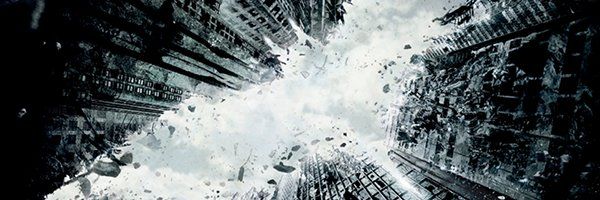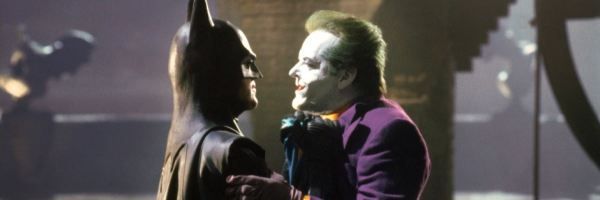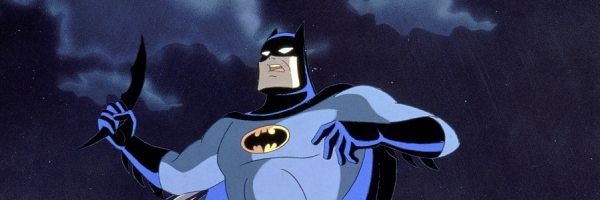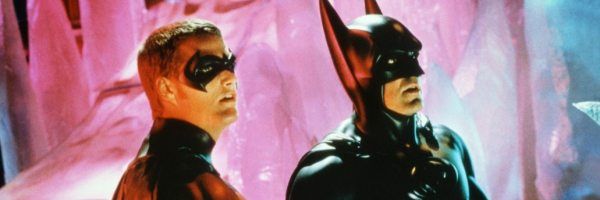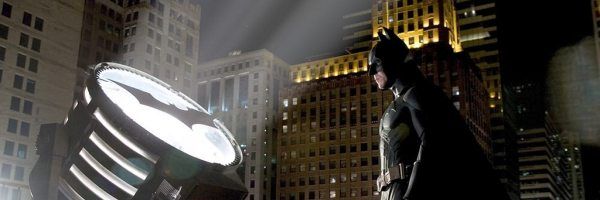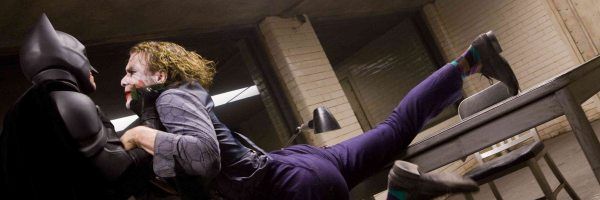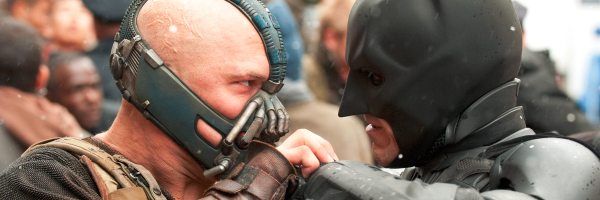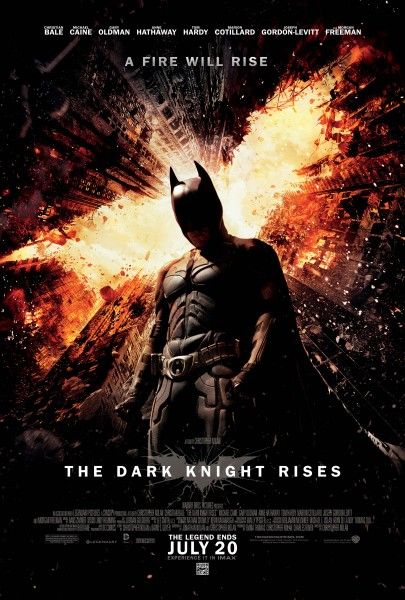I can't say who is the biggest superhero in comics, but when it comes to their big screen counterparts, the debate is short: It’s Batman. With the release of The Dark Knight Rises, the collection of nine Batman feature films over the last six decades is on its way to $3 billion in worldwide gross. To celebrate I present Batman by the Numbers, a feature that provides a numbers-based snapshot of each movie and its place in the filmography by looking at the box office, critical reception, and miscellaneous facts.Hit the jump for a comprehensive review of Batman at the movies, featuring Batman: The Movie, Batman, Batman Returns, Batman: Mask of the Phantasm, Batman Forever, Batman & Robin, Batman Begins, The Dark Knight, and The Dark Knight Rises.I will skip the 1940s serials and go straight to the 1966 movie with Adam West. To consolidate, Tim Burton’s movies will be grouped together, as will Joel Schumacher’s. 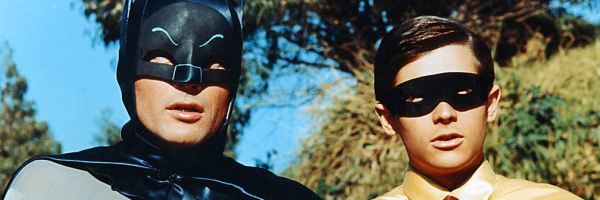
Batman: The Movie
Year: 1966
RT: 80%
Worldwide Gross: Unknown
- $1,377,800 – Estimated budget. This is certainly the least expensive live-action Batman movie, probably even if you adjust for inflation.
- 4 – Villains: Joker (Cesar Romero), Riddler (Frank Gorshin), Penguin (Burgess Meredith), and Catwoman (Lee Meriwether). For a laugh, watch how Batman and Robin deduced all four of their main villains from the show were in cahoots.
- 4 – Bat vehicles used: the Batmobile (obviously), the Batcycle, the Batboat, and the Batcopter.
- 36 – Days of shooting. The initial plan was to produce a TV movie to launch the show, but ABC moved the series premiere date up to January 1966. This delayed plans for a movie, but they wanted the movie to be released in July 1966 before season two premiered, which required a rushed production after season one wrapped.
- 120 – Episodes of the show. The show aired twice weekly on back-to-back nights for the first two seasons---the villain is introduced in part one and conquered in part two---plus a pair of 3-part episodes in season two. As the show neared cancellation in season three, the format was changed to one self-contained airing a week.
- $1 – Cost George Barris paid for the Lincoln Futura. In 3 weeks, for a reported cost of $30,000, Barris turned the Futura into the iconic Batmobile.
Adam West is the Batman I know best. There was a good year or two where Batman was the show I looked forward to most when I spent the night at my Nana’s house (she had cable). This iteration is the most fun Batman has ever been, but the audacious camp approach may have tarnished the idea of Batman on film for a few years. Tim Burton certainly had difficulty convincing the public his Batman was darker, and not a comedic character.
Batman
Year: 1989
RT: 71%
Worldwide Gross: $411 million
Batman Returns
Year: 1992
RT: 78%
Worldwide Gross: $267 million
- 50,000 – Protest letters sent to Warner Bros. about casting Michael Keaton as Batman. Burton remarked, “I think they thought we were going to make it like the TV series, and make it campy, because they all thought of [Keaton] from Mr. Mom and Night Shift and stuff like that. But that never bothered me because I knew we weren’t doing that.â€
- 3 – Weeks Jack Nicholson was willing to commit to play the Joker in Batman. His contract also specified the number of hours he would take off each day and he would attend all Los Angeles Lakers home games. For his efforts, Nicholson received a $6 million salary and a huge portion of the box office gross, perhaps as much as $50 million.
- 28 – Sculpted latex designs for the Batman uniform created by costume designer Bob Ringwood. He also crafted 25 different cape looks and 6 different masks. The process cost $250,000. Second unit director Peter MacDonald said, “You have to be a kind of superman to be able to move [in this suit]. So we had the normal stunt guy and we had a martial arts guy, and we had a ballet dancer. The ballet dancer was the one that did the walk in, because this guy could swish his cape and look great, you know – and then two quite tough guys to do the fighting.â€
- $30 million – Initial budget set for Tim Burton’s Batman.
- $48 million – Actual budget spent for the final production. That ballooned to $80 million for Batman Returns.
- $750 million – Merchandising sales by August 1992. Batman was also the first movie to earn $100 million in its first ten days of release and earned $150 million more in home video sales.
- $10 million – Salary bump awarded to Keaton to reprise his role as Batman in the sequel.
- $144 million – Difference between the gross of Batman and Batman Returns. The sequel was still successful, but underperformed relative to the massive success of Batman. The prevailing theory was that Batman Returns was just too dark for the family audience, which led to a director switch for the next Batman sequel
I was one year old when Batman came out, so I can’t properly assess just how big it was. But my understanding is that it was a massive cultural phenomenon---probably on a bigger scale than The Dark Knight Rises, even, in the time before superhero movie saturation. It had been 12 years since the last major superhero was introduced on screen, and Superman had been run into the ground by 1987 with the reviled Superman IV. The appetite was high for another superhero was high, and Batman delivered. Batman Returns did not reach the same heights, but confirmed that Hollywood could find sustained success with superhero properties. It is retroactively surprising that it took Marvel another decade to get around to X-Men and Spider-Man.
Batman: Mask of the Phantasm
Year: 1993
RT: 87%
Worldwide Gross: $6 million
- 76 – Runtime in minutes. By far the shortest Batman film.
- $6 million – Estimated production budget. Warner Bros. increased the budget to $6 million when they decided to release Phantasm theatrically rather than stick to the initial straight-to-video plan.
- 8 – Months taken to complete the production from start to finish. This time crunch arose from the shift to a theatrical release, so WB in turn gave the animation team full creative control in addition to the budget increase.
- 11 – Box office rank on opening weekend. Phantasm was unable to capitalize on the popularity of Burton’s movies. The filmmakers blamed the subpar marketing campaign that Warner Bros. had to whip up on short notice.
- 85 – Total episodes of Batman: The Animated Series. Season one consisted of a whopping 65 episodes that aired from September 1992 to September 1993. Mask of the Phantasm hit theaters in December 1993. The animated series continued with 20 more episodes on Fox in May 1994 under the title The Adventures of Batman & Robin because Robin took on a more prominent role.
I want to give props to the animated Batman, in part because I spent every afternoon of my childhood watching Batman: The Animated Series. (So technically, I guess Kevin Conroy is the Batman I know best.) I hope to revisit the series eventually because it is one of those few shows from childhood that actually earned critical approval (compared to, say, Saved by the Bell).
Batman Forever
Year: 1995
RT: 42%
Worldwide Gross: $266 million
Batman & Robin
Year: 1997
RT: 12%
Worldwide Gross: $238 million
- $30 million – Amount producer Harry Colomby estimated Keaton lost when he decided not to return as Batman. Keaton stated he wanted to pursue “more interesting roles.†It was also problematic that Burton, the man who championed Keaton for the role, was shunned. An inside source suggested, “Warner Bros. didn't want Tim to direct. He's too dark and odd for them.â€
- 5 – Actors (at least) that were considered to replace Keaton as Batman. The studio looked at Daniel Day-Lewis, Ralph Fiennes, Johnny Depp, and (seriously) Billy Baldwin before ultimately deciding on Val Kilmer. Kilmer was cast mere days after Keaton dropped out.
- 41 – Weight of the Robin costume in pounds. Robin had a presence in the shooting script for Batman Returns, and Marlon Wayans was cast in the role. Wayans later reflected, “I got my wardrobe fitted and everything, and what happened was that there were too many characters, and they felt Robin wouldn't be of service. So they put me in the third one, and when the third one came around, they got a new director on it, and their vision of the project changed. They decided they wanted somebody white to play Robin.†That somebody white was Chris O’Donnell, who beat out Leonardo DiCaprio for the role.
- 2 – Nipples added to the Batman costume. For some reason.
- 160 – Runtime in the original cut of Batman Forever. There were rumors that this extended, allegedly darker version would appear on the 10th anniversary DVD in 2005, but no such luck.
- 0 – How critic Mark LaSalle described George Clooney when he took over as the new Batman Batman & Robin. Specifically: “George Clooney is the big zero of the film, and should go down in history as the George Lazenby of the series.†Ouch. Schumacher cast Clooney amid his ER heyday because he thought the actor would fit the lighter tone of this movie compared to the darker interpretations of Keaton and Kilmer.
- $43 million – Opening weekend for Batman & Robin. That was great, but meant that Batman Forever was the first modern Batman movie that did not break the opening weekend record. Batman, Batman Returns, and Batman & Robin each broke the record with $40 million, $46 million, and $53 million, respectively.
- 11 – Razzie nominations for Batman & Robin including Worst Picture and Worst Screen Couple (for Clooney and O’Donnell). Only Alicia Silverstone won for Worst Supporting Actress as Batgirl.
Ah, the nadir of Batman---the movies that nearly ruined his on-screen viability. The one good thing you can say about Batman & Robin is that it perfectly set up Christopher Nolan to take over the franchise. Also, ice puns.
---
Head to page 2 for the numbers on Batman Begins, The Dark Knight, and The Dark Knight Rises.
Page 2
Batman Begins
Year: 2005
RT: 85%
Worldwide Gross: $373 million
- 8 – Actors who auditioned to be the new Batman: Joshua Jackson, Eion Bailey, Hugh Dancy, Billy Crudup, Cillian Murphy, Henry Cavill, Jake Gyllenhaal, and eventual winner Christian Bale. Nolan liked Murphy enough to cast him as The Scarecrow.
- 100 – Pounds Christian Bale gained in just a couple months to play Batman. Bale slimmed down to a waifish 120 pounds for his previous project, The Machinist, and spent two months with a trainer to bulk up for Batman Begins. Bale actually overdid it and became too bulky for they swift superhero, but lost the excess 20 pounds before filming.
- 3 – Number of times Bale lost his voice on set thanks to that growl. Basically, Bale is crazy devoted to this performance, to the point that he is more than willing to destroy his body for any role.
- 129 – Days of shooting. Nolan does not employ a second unit to shoot auxiliary footage, and so oversaw every frame shot.
- 250 x 120 x 40 – Dimensions of the Batcave set in feet. The waterfall that hides the Batcave was created with 14,000 gallons of water.
- $250,000 – Cost of each of the four street-ready Tumblers. Of course, the design and development process for this iteration of the Batmobile required several million dollars over 9 months. Designer Nathan Crowley faced the challenge of creating a massive car that could a) exceed 100 miles per hour, b) accelerate from 0 to 60 in 5 seconds, c) turn corners at speed, and d) jump 30 feet in the air and land without damage.
- 140 – Minutes of music in Batman Begins---essentially the entire movie. Hans Zimmer and James Newton Howard collaborated with a 90-piece orchestra and added some elements of electronic music. Zimmer took the reins on the action sequences, while Howard focused on the dramatic scenes. The track names on the soundtrack refer to bat species, and the first letters of tracks 4-9 spell out “B-A-T-M-A-N.â€
- $3,365,449 – Cost Forbes estimated at the time of release to actually become Batman.
Batman Begins was not a smash hit, earning $40 million less than Batman did a decade and a half earlier. But what the movie lacked in raw earning power, it made up for by completely redirecting the public opinion of Batman on film. Batman Begins has become the standard-bearer for superhero reboots. Warner Bros. is happy to see their investment in Christopher Nolan’s vision has paid off handsomely after the phenomenal box office of The Dark Knight and the inevitable success of The Dark Knight Rises.
The Dark Knight
Year: 2008
RT: 94%
Worldwide Gross: $1.0 billion
- 15 – Years Christopher Nolan said he had wanted to shoot in the IMAX format prior to filming The Dark Knight. Nolan explained, “Everything about doing this in the IMAX format is trying to get that feeling back when I was a little kid when I'd sit in a movie theater and see images that were larger than life.â€
- 1 – Month Heath ledger spent secluded in a hotel room to figure out the character. He said, “I sat around in a hotel room in London for about a month, locked myself away, formed a little diary and experimented with voices---it was important to try to find a somewhat iconic voice and laugh. I ended up landing more in the realm of a psychopath---someone with very little to no conscience towards his acts.â€
- $45 million – Estimated boost to Chicago’s economy while the $185 million production was stationed there. This included 390 local hires and 6,000 extras.
- 120 – Computer-generated shots of Two-Face’s charred face created by visual effects company Framestore. CGI was used instead of makeup because makeup is necessarily additive, while the burns destroy so much of Harvey Dent’s face.
- 178 – Days before the release that Heath Ledger died from an accidental overdose.
- $533,345,358 – Total domestic gross. At the time, that was good enough to put The Dark Knight at second on the all-time domestic grosses list. Since then, Avatar and The Avengers has passed it. The $158 million opening weekend set the record at the time (now in third place), and as of this writing remains the highest opening weekend for a 2D movie (The Dark Knight Rises will top it).
- 6 – Days it took for The Dark Knight to surpass the domestic box office Batman Begins earned over its entire 4-month run.
- 8 – Oscar nominations. The Dark Knight broke Dick Tracy’s record 7 nominations for a movie based on a comic book. Heath Ledger won Best Supporting Actor and Richard King won for sound editing. I don’t imagine another Batman film will top this any time soon.
There is a good chance that this will be the best Batman movie ever made. The ceiling for a superhero movie is determined by the villain, and Ledger’s Joker is the cream of the crop. Nolan eschewed the villain’s origin story so the Joker drops into Gotham out of nowhere. The result is a lived-in character that is equal parts entertaining and terrifying. The rest of the movie just barely keeps up with the Joker, so The Dark Knight is a classic with the critical raves and box office records to prove it. It set a really high standard for Nolan’s trilogy that The Dark Knight Rises could not possibly meet.
The Dark Knight Rises
Year: 2012
RT: 87%
Worldwide Gross: TBD
- $250 million – Listed production budget. Obviously the most expensive Batman movie. $250 million puts The Dark Knight Rises on the list of one of the top five most expensive movies of all time according to publically listed production budgets.
- 11,000 – Extras in the football stadium scene. That is a lot of extras. However, I was surprised that, given the purpose of the scene (Bane strikes fear into the heart of the city), the upper deck was mostly empty. To be fair, the capacity of the Pittsburgh Steeler’s Heinz Field (the shooting location) is nearly 65,000.
- 110 – Separate pieces that make up the Batsuit. The base layer is a polyester mesh designed for use by the military and athletes. Molded pieces of flexible urethane are then attached to the mesh to form the body armor plating. No major changes were made to the suit from The Dark Knight.
- 72 – Minutes of footage shot in IMAX. Cinematographer Wally Pfister wanted to shoot the entire movie in IMAX, but that is currently not feasible since the cumbersome setup of IMAX cameras does not allow for much mobility or audible dialogue. Still, this is an upgrade on The Dark Knight, which featured 28 minutes of IMAX footage.
- 8 – Years that have passed (within the movie) since The Dark Knight. Pretty much exactly, since a character references that 8 years ago to the day, Batman killed Harvey Dent. I have become fixated on what years the Nolanverse spans (is this the near future?) so please leave any hypotheses in the comments.
- 164 – Runtime in minutes. The longest Batman movie, topping The Dark Knight at 152 minutes. Nolan always runs long, as all the movies in his trilogy are longer than 2 hours and 20 minutes, The Burton/Schumacher movies all come in at just over 2 hours, ranging from 121 to 126 minutes.
- 12.5 million – Downloads of the trailer in the first 24 hours after its release on iTunes. This broke the iTunes record previously set by The Avengers, though The Avengers took back the record with 13.7 million views for its second trailer.
- 3 – Times Christian Bale has now played Batman. He is the first actor to assume the role more than twice.
- 5 – Films in a row that Christopher Nolan shot with Michael Caine: Batman Begins, The Prestige, The Dark Knight, Inception, and The Dark Knight Rises.
The Dark Knight arrived on a perfect storm of hype and hope and somehow delivered. That turned up the expectations to eleven for The Dark Knight Rises, and unless Nolan and Co. could recapture lightning in a bottle, the conclusion to the trilogy would have to disappoint on some level. Indeed it does, but minimizes the letdowns in what is otherwise a very entertaining spectacle.
I had problems with the use of Catwoman. I should admit some bias against Anne Hathaway, since I have never liked the tics and affectations that plague her performances. Here, the point is for Hathaway to briefly step in to all kinds of mannered personalities as cat burglar/con artist Selina Kyle, and often be purposefully obnoxious to get rile Bruce Wayne. So credit to Hathaway for doing what was asked of her, but it was still a grating character who never quite fits with the rest of the story. Selina is often left on the fringes of the plot to carry the Haves vs. Have-Nots message of the movie that never quite sticks, and spends the remaining time on screen as a romantic foil for Batman.
I think the other primary villain, Bane, works much better. While the mask prohibits the endlessly charismatic Hardy from taking over the role in a way that might have been more fun to watch, it also gives the sound team an opportunity to play with the magnitude and effect of his voice. Bane is prone to witty yet soulless speeches, and his robotic voice is further separated from any remaining shred of humanity in the sound mix---his threats wash over the audience with disembodied menace. That chant (Deshay deshay basara basara) is a great and fitting theme for Bane, pounding with purpose whenever he is near.
The contrast between Bane and Batman is a ripe central conflict to propel the latter’s character arc toward its conclusion. Bane dresses like a post-apocalyptic rebel leader, but fights with the controlled discipline of a marine. Meanwhile Batman, suited up in thousands of dollars worth of armor, flails desperately at Bane in their first encounter. There is something inspiring in seeing our seemingly invincible hero broken and battered---both emotionally and physically---at the beginning of the story before he claws his way back into fighting shape to save Gotham one last time. Christian Bale has always been solid as Bruce Wayne/Batman, but The Dark Knight Rises gives him more opportunity than ever for occasional moments of greatness.
I have problems with the ending, specifically where some of the characters end up by the time the credits roll. But I understand why this route was chosen, and I have to admit it leaves me very curious where Warner Bros. will take the franchise from here. The studio drew a great trilogy (surely the most consistent superhero trilogy out there) with one classic bookended by two very good films. The Dark Knight Rises sufficiently concludes the tale of this Batman while leaving the door open just a crack for more stories in this universe, so Batman could go anywhere from here. When he does return, I think I speak for most of us when I say I’ll be there.

